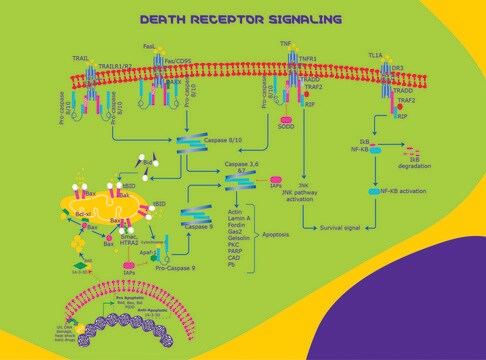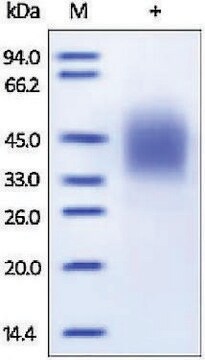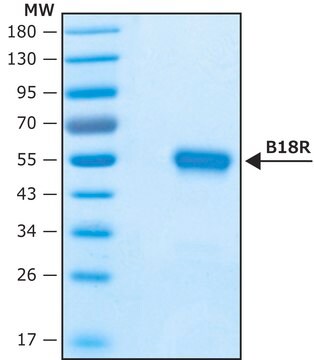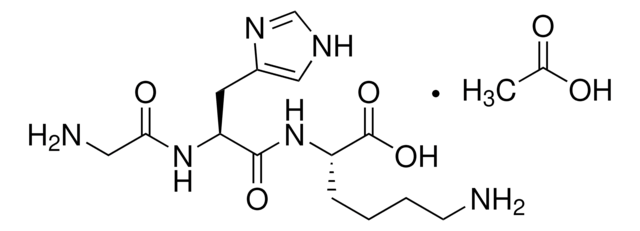SRP6238
TRAIL murine
recombinant, expressed in E. coli, ≥95% (SDS-PAGE)
Sinónimos:
Apo2 Ligand, TL2, TNF-related apoptosis-inducing Ligand, TNFSF10
About This Item
Productos recomendados
biological source
rat
recombinant
expressed in E. coli
assay
≥95% (SDS-PAGE)
form
lyophilized powder
mol wt
20 kDa
packaging
pkg of 10 μg
pkg of 50 μg
impurities
<1 EU/μg endotoxin (LAL test)
UniProt accession no.
shipped in
wet ice
storage temp.
−20°C
Gene Information
mouse ... TRAIL(22035)
General description
Physical form
Reconstitution
Storage Class
11 - Combustible Solids
wgk_germany
WGK 1
flash_point_f
Not applicable
flash_point_c
Not applicable
Elija entre una de las versiones más recientes:
Certificados de análisis (COA)
Lo sentimos, en este momento no disponemos de COAs para este producto en línea.
Si necesita más asistencia, póngase en contacto con Atención al cliente
¿Ya tiene este producto?
Encuentre la documentación para los productos que ha comprado recientemente en la Biblioteca de documentos.
Nuestro equipo de científicos tiene experiencia en todas las áreas de investigación: Ciencias de la vida, Ciencia de los materiales, Síntesis química, Cromatografía, Analítica y muchas otras.
Póngase en contacto con el Servicio técnico







